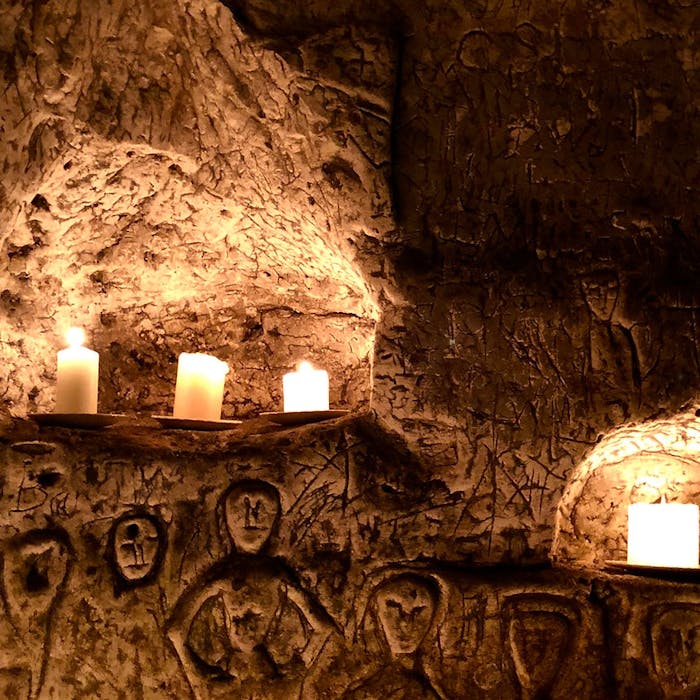
The mysterious Royston Cave
Beneath a crossroads in the Hertfordshire town of Royston lies a man made cave. There was no record of its existence until it was accidentally discovered in 1742. Within the cave are mysterious carvings, and one theory is that this was a sacred place for the Knights Templar.
In 1742 workmen discovered a buried millstone whilst digging for renovation works for the Royston Cheese and Butter Market. Removing the object, they found a shaft, leading downwards into the chalk. A boy was lowered into the cavity by rope and discovered a strange bell-shaped cave partially filled with earth.
Hoping for buried treasure, the locals dug out the cavity. Unfortunately, the soil was not analysed or preserved, but is known to have contained human bones and fragments of pottery and a small piece of brass. No treasure was discovered - just strange wall carvings which remain unexplained to this day.
The cave lies under the crossroads formed by Ermine Street and the Icknield Way. It may, therefore, predate the town of Royston - but no one really knows. It is both a scheduled ancient monument and a Grade I listed building.
The walls of the cave are decorated with low-relief carvings which are mostly Christian in depiction and medieval in style. They include representations of the Crucifixion and notable saints such as St Catherine and St Christopher. Elsewhere are figures of a horse and an Earth Goddess, believed to be Pagan fertility symbols. Some say that the image of St Catherine and her Wheel is actually a depiction of the Roman goddess Fortuna - which just goes to show that nothing is certain about these images.
Some theories suggest the cave was used by the Knights Templar. Carvings similar to those in the cave have been found at other Templar sites, and they did have a presence in the area. The Templars were declared heretics by the Pope in 1312 - under pressure from the King of France who had staged a sudden coup against them on Friday 13th October 1307. Many were tortured and executed. With the King of England both a subject of the Pope and related by marriage to the French King, the outlook for Templars in England was poor. They went underground - in the case of Royston Cave, perhaps quite literally.
A recent study on the designs of the crowns, swords and costume depicted in the cave suggest that the carvings were likely made in the mid-1300s. This would fit neatly into a post-downfall-of-the-Templars scenario.
Others ideas about the cave are that it was a private chapel or hermitage. One theory is that King James I, who had a palace in Royston and came there often to hunt, used the cave for his Freemasonry ceremonies.
The cave can be visited on weekends and Bank Holidays from April to September.
Further reading
Links to external websites are not maintained by Bite Sized Britain. They are provided to give users access to additional information. Bite Sized Britain is not responsible for the content of these external websites.
